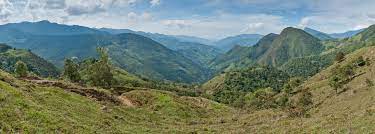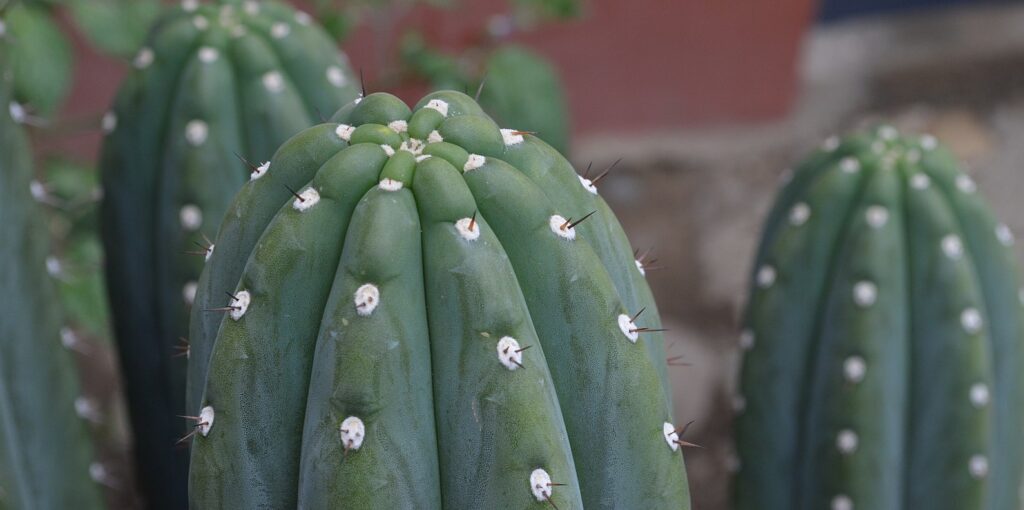Give up? Well, it’s none other than the San Pedro cactus.
For Pete’s Sake: What is San Pedro?
Commonly known as San Pedro, the cactus Echinopsis pachanoi contains a ton of psychedelic alkaloids — with mescaline as its main psychoactive ingredient. The cactus grows naturally in Peru, Ecuador, Chile, Bolivia, and Argentina, along the Andes mountains.
(Mescaline is a hallucinogenic compound which can alter thought processes and distort time.)
The psychedelic experience will vary depending on which species of San Pedro you take, for example the Bolivian Torch or the Peruvian Torch would produce different experiences — but both belong to the Echinopsis genus.
When consumed, San Pedro triggers a psychedelic trip similar to pure mescaline, but not exactly the same. Many users also describe San Pedro as a stimulant (like coffee). The whole trip lasts around 10 hours, give or take.
History of San Pedro Cactus

San Pedro’s usage dates back over 3,000 years — a history rich and majestic as the Andes mountains. Shamans would harvest it for rituals that could last several days. They called it materia prima, meaning the “primordial soup of the cosmos”.
The Andean tribes would translate their visionary trips through wood carving, stone sculptures, and painting textiles. There were a few recurring symbols seen by shamans — such as jaguars, owls, deer, and boa — all of which serve as spiritual guides.
The name San Pedro (Spanish for Saint Peter) can be traced to the conquest of Catholic missionaries. Legend goes that the keys to heaven were hidden by God — but they were later found by Saint Peter when he ingested the cactus.
Another name for San Pedro is huachuma, which means “to remove the head”. According to natives, the San Pedro cactus can destroy your prior convictions and bring you “closer to heaven”. Sounds rather like ego death, doesn’t it?
Ways to Consume San Pedro

The traditional way of taking San Pedro is by brewing it into a tea. The cactus can also be ground up into slush; its pulp feels similar to cut-up kiwi.
San Pedro tastes extremely bitter due to its alkaloids. Users often vomit at first…
Modern ways of consuming San Pedro include:
- Drying it and grinding into a powder to put in capsules (the easiest method since the bitterness will not make you gag).
- Dissolving its powder in a drink, such as sweet iced tea or fruit juice (which helps mask the taste).
Dosage
An active dose of San Pedro may vary from 20 to 50 grams of dried cactus skin. The number of active alkaloids in legit San Pedro are not known, so these dosages are simply estimates.
Why is that? This is largely because of breeders who have been crossing different species of the cactus such as the lageniformis, pachanoi, and peruviana. One popular hybrid from this crossbreeding is referred to as pachanot — which most cactus flower shops in the US often market as the San Pedro cactus.
However, it’s not the real deal. And due to the pachanot’s low alkaloid content, you won’t experience any psychedelic effects if you consume it.
Side Effects of San Pedro
When consuming psychedelic plants like San Pedro, something called “purging” may occur. This can manifest as vomiting or diarrhea during the onset of the trip.
Other side effects of San Pedro include:
- Increased heart rate and blood pressure
- Hallucinations
- Loss of sense of reality
- Heightened sensations
- Loss of appetite
- High body temperature
- Impaired motor coordination (which can affect how various body parts move in sync, like in driving, for instance)
- Dilated pupils
- Synesthesia, or the illusion of “seeing music” and “hearing colours”
The mescaline present in San Pedro can also trigger HPPD (or Hallucinogen persisting perception disorder) . Also known as “visual snow”, it’s akin to seeing a flurry of particles in the air, blurring your eyesight.
San Pedro’s Legal Status in 2020
Today, despite its growing popularity especially among collectors, San Pedro remains illegal in most of the Western world.
But it doesn’t mean that tourists can’t experience it for themselves. For instance, in South America there is a rising trend for retreats where San Pedro may be consumed in a traditional setting.
Called “San Pedro Ceremonies”, these retreats often involve the Native communities very closely for an authentic experience. However, as always with this kind of set-up, the question of exploitation is always raised. Are the tourists commodifying ancient and sacred ways of life — and wearing them away in the process? Or are tourists paying large sums of money for a potentially dangerous and unregulated experience? Could both be true? The debate is complicated.
As to the cactus’s legal standing, the Comprehensive Drug Abuse Prevention and Control Act of 1970 ruled mescaline (the compound in San Pedro) as an illegal substance.
However, mere possession of San Pedro cactus for gardening or decoration won’t get you arrested — but the intent to consume it will.
The United Kingdom classifies mescaline as a schedule A substance. This means that according to the government, mescaline has “no medicinal value”. Australia’s schedule 9 ruling stipulates the same.
The only exceptions are Germany and the Netherlands. But due to the more progressive attitudes to drugs of the Dutch, that’s not really a surprise now, is it?
An Important Note…
*Now, while we do not advocate the illegal use of drugs (so check the laws in your home country!) we think its important to be educated on the fascinating family of naturally occurring psychedelics. This article is meant as an exploration of history and techniques rather than a how-to guide. If you want to enjoy a psychedelic experience safely — perhaps even from your own home— you HAVE to check out our range of magic truffles and magic mushroom grow kits!

 Combo deals >
Combo deals >

 500 gr.
500 gr.  90/100
90/100 

 %
%

 Credit Card or other
Credit Card or other  payment options
payment options
 coupon 10% discount on MAGIC TRUFFLES
coupon 10% discount on MAGIC TRUFFLES